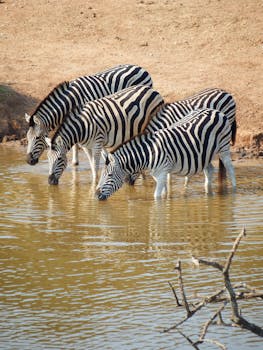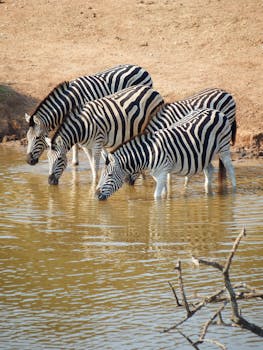Serengeti Tours Decoded: Best Times to Visit, Wildlife Spotting Tips & More
Table of Contents
Introduction to Serengeti Tours Decoded: Best Times to Visit, Wildlife Spotting Tips, & More
The Serengeti, Tanzania’s iconic wilderness, offers unparalleled wildlife encounters and breathtaking landscapes. Planning the perfect safari requires timing your visit for optimal game viewing, understanding migration patterns, and knowing expert spotting techniques. This guide reveals the best seasons to explore, essential wildlife tips, and insider advice to maximize your Serengeti adventure. Whether tracking the Great Migration or seeking the Big Five, unlock the secrets to an unforgettable safari experience.
Best Times To Visit The Serengeti For An Unforgettable Safari Experience
The Serengeti is a land of endless horizons, where golden grasslands stretch as far as the eye can see, and the rhythm of nature dictates the pace of life. Planning the perfect safari here hinges on timing—choosing the right season can mean the difference between witnessing the Great Migration in full swing or enjoying a quieter, more intimate encounter with the wild. Understanding the Serengeti’s seasonal patterns is key to crafting an unforgettable experience, whether you’re dreaming of dramatic river crossings or serene moments under acacia-dotted skies.
The dry season, from late June to October, is often considered the prime time to visit. With sparse vegetation and animals congregating around water sources, wildlife spotting becomes remarkably easy. This is also when the Great Migration reaches its peak, particularly in the northern Serengeti, where herds of wildebeest and zebra brave the crocodile-infested waters of the Mara River. The spectacle of thousands of animals surging across the river is nothing short of breathtaking, and the dust-choked air adds a cinematic intensity to the scene. While this period draws more visitors, the rewards—lion prides on the hunt, elephants cooling off in muddy pools, and cheetahs scanning the plains—make it well worth the crowds.
For those who prefer a quieter safari, the shoulder months of late January to February offer a different kind of magic. The calving season in the southern Serengeti turns the plains into a nursery, with wildebeest giving birth to thousands of calves in a matter of weeks. Predators lurk nearby, creating dramatic moments, but the overall atmosphere is one of renewal and abundance. The weather is warm, the landscapes are lush, and the birdlife is particularly vibrant. It’s a fantastic time for photographers, with soft morning light and fewer vehicles competing for the best vantage points.
The wet season, from March to May, brings its unique charm, though it’s often overlooked by travelers. The rains transform the Serengeti into a sea of green, with wildflowers blooming and newborn animals taking their first steps. While some lodges close during this time, those that remain open offer lower rates and a more exclusive experience. The trade-off? Roads can be muddy, and wildlife is more dispersed, but the serenity of having vast stretches of the park almost to yourself is unparalleled. Birdwatchers will especially appreciate this season, as migratory species add splashes of color to the already vibrant scenery.
No matter when you visit, a few universal tips can enhance your safari. Early mornings and late afternoons are prime times for game drives, when animals are most active and the light is ideal for photography. Packing layers is essential—mornings can be chilly, but the midday sun is intense. And while the Big Five often steal the spotlight, don’t forget to appreciate the smaller wonders: a secretary bird stalking through the grass, a dung beetle rolling its prize, or the haunting call of a fish eagle at dusk.
The Serengeti is a place where every season tells a different story, and there’s no single “best” time to go—it all depends on the adventure you’re seeking. Whether you’re drawn to the drama of the Migration, the tranquility of the green season, or the intimate moments of new life, this iconic landscape promises an experience that will stay with you long after you’ve left its sunlit plains behind.
Wildlife Spotting Tips: How To Maximize Your Serengeti Adventure

Serengeti Tours Decoded: Best Times to Visit, Wildlife Spotting Tips, & More
The Serengeti is a land of endless horizons, where golden grasslands stretch as far as the eye can see and the rhythm of nature dictates life itself. For wildlife enthusiasts, this iconic Tanzanian park offers some of the most thrilling animal encounters on the planet—but knowing how and when to spot them can make all the difference. Whether you’re dreaming of witnessing the Great Migration or hoping to catch a glimpse of a stealthy leopard, a few insider tips can turn a good safari into an unforgettable adventure.
First, timing is everything. While the Serengeti dazzles year-round, certain seasons heighten your chances of wildlife spectacles. The dry months from June to October are prime for game viewing as animals gather around dwindling water sources, making them easier to track. This is also when the Great Migration reaches its dramatic peak, with thousands of wildebeest and zebras braving crocodile-infested rivers in a desperate dash for greener pastures. If you’re after big cats, this is your moment—lions, cheetahs, and leopards lurk near the herds, turning the plains into a predator’s playground. For those who prefer quieter crowds, the wet season (November to May) offers lush landscapes, newborn animals, and excellent birdwatching, though some roads may be tricky to navigate.
Once you’ve picked your season, the next step is mastering the art of wildlife spotting. Early mornings and late afternoons are golden hours—not just for photography but for animal activity. Predators are most active during these cooler periods, while midday heat sends many creatures into the shade. Patience is key; instead of rushing from one sighting to the next, pause and observe. A still silhouette in the grass could reveal a resting lion, and a rustle in the trees might betray a hidden leopard. Listen to your guide—their trained eyes and knowledge of animal behavior are invaluable. They’ll notice subtle signs like vultures circling overhead (a clue to a recent kill) or the alarm calls of baboons (often signaling a predator nearby).
Binoculars are a safari essential, but don’t forget to look closer, too. The Serengeti’s smaller residents—like dung beetles rolling their prized balls or vibrant agama lizards—add charm to the experience. Even the landscape tells a story; termite mounds become lookout posts for meerkats, and twisted acacia trees serve as scratching posts for elephants. To maximize sightings, vary your locations. Riverbanks and waterholes are hubs of activity, while the kopjes (rocky outcrops) attract lions and hyraxes. If migration is your focus, check current herd positions with your lodge or guide, as their route shifts slightly each year.
Finally, respect the wild. Keep noise to a minimum, avoid sudden movements, and never attempt to feed or approach animals. The Serengeti thrives because humans are mere observers in its ancient dance. With the right timing, a sharp eye, and a spirit of curiosity, your safari will be more than just a trip—it’ll be a front-row seat to nature’s greatest show.
Essential Packing List And Travel Hacks For Serengeti Tours
Planning a trip to the Serengeti is an adventure of a lifetime, but packing the right gear and knowing a few travel hacks can make all the difference between a good trip and an unforgettable one. The vast plains, unpredictable weather, and remote locations mean you’ll need to be prepared for anything—while still keeping your luggage light and manageable. Let’s break down the essentials so you can focus on the magic of the wild without any unnecessary stress.
Regarding gear, a good pair of binoculars is a game-changer. Wildlife sightings can happen at a distance, and you won’t want to miss the details of a lion’s mane or a cheetah’s spots. A high-quality camera with a zoom lens is another must, along with extra memory cards and batteries—power outlets can be scarce in remote camps. A portable power bank ensures your devices stay charged, and a lightweight daypack is perfect for carrying essentials during game drives. Don’t forget a reusable water bottle; staying hydrated is crucial, and many lodges and camps provide filtered water to reduce plastic waste.
Health and comfort should also be top priorities. A small first-aid kit with basics like pain relievers, antihistamines, and bandages, along with any personal medications, is wise. Malaria is a risk in some areas, so consult your doctor about prophylaxis before traveling. Insect repellent with DEET will help keep mosquitoes and other bugs at bay, and sunscreen with high SPF is essential—even on cloudy days, the African sun is intense. Hand sanitizer and wet wipes are handy for quick clean-ups, especially after dusty game drives.
A few travel hacks can elevate your experience even further. Packing a few resealable plastic bags is surprisingly useful—they keep snacks fresh, protect electronics from dust, and organize small items. If you’re prone to motion sickness, bring ginger chews or medication for bumpy rides on safari vehicles. And while Wi-Fi is available at some lodges, it’s often slow or unreliable, so downloading maps, wildlife guides, or entertainment beforehand can save frustration.
Finally, embrace the spirit of adventure while staying mindful of the environment. The Serengeti’s beauty lies in its untouched wilderness, so opt for biodegradable toiletries and avoid single-use plastics whenever possible. With the right preparation, you’ll be free to immerse yourself in the wonder of the wild—whether it’s the thunder of a wildebeest migration or the quiet grace of a giraffe at sunset. After all, the best memories are made when you’re ready for anything.
Adventure thrives where respect for nature leads—pack light, leave no trace, and let the wild’s untamed beauty inspire both your journey and your soul. For in the Serengeti’s whispers and roars, the greatest stories are written by those who wander wisely.
Serengeti Tours Decoded provides essential insights for planning an unforgettable safari, highlighting the best times to visit for optimal wildlife viewing, providing expert tips for spotting the Big Five, and providing practical advice for navigating the park. Whether chasing the Great Migration or seeking serene off-peak experiences, this guide ensures travelers maximize their adventure in one of Africa’s most iconic destinations. Proper preparation and timing are key to witnessing the Serengeti’s breathtaking landscapes and diverse wildlife.
“Ready to explore the Serengeti? Discover the best times to visit, expert wildlife spotting tips, and more. Book your adventure now with Zamadam Adventure and experience the wild like never before!”








